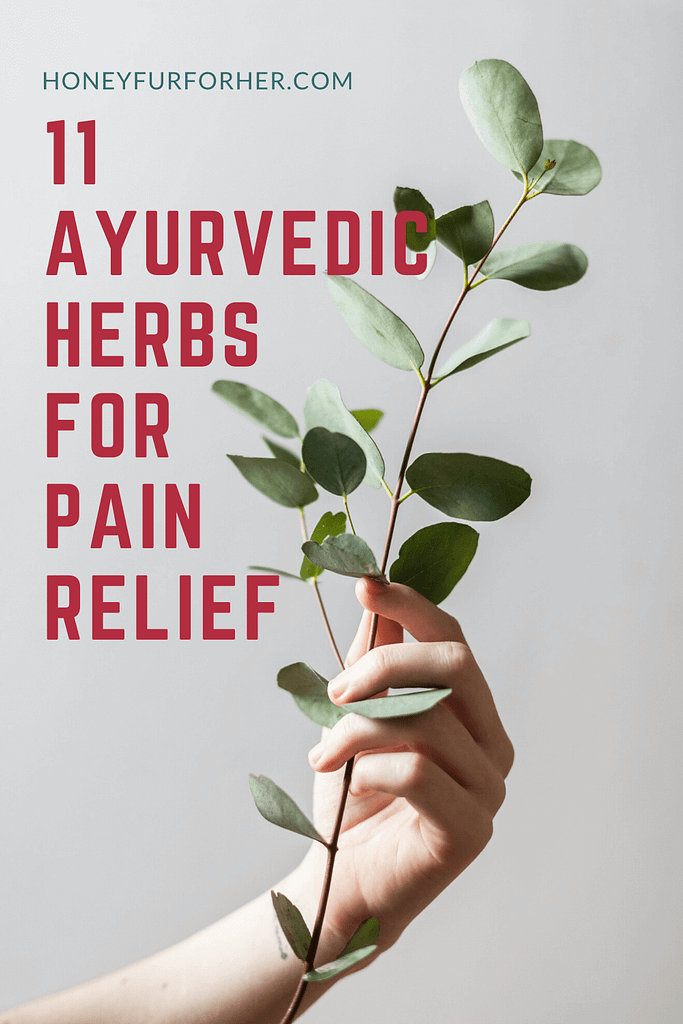Medical Reviewer: Dr Surabhi Rawat
Mother has always been upfront and unapologetic about her preferences of naturally occurring remedies. A bag of rice heated on a Tawa (flat pan) has always provided welcome relief against cramps. The treasured eucalyptus oil has been a worthy choice for all massages and pain management. Turmeric has been a go-to to cleanse, heal and disinfect areas after a rather unpleasant playtime.
Oftentimes than not, Ayurveda is a science of healing while it scours its roots, passing on its secrets to a select few. The knowledge of which is passed down to eager practitioners by their masters to explore the secrets of nature amidst a world driven by the need to create more instead of understanding the natural biosphere. These days, paracetamols are preferred over naturally infused oils and elastic crepe bandages are chosen overheat therapy. Pain isn’t new to humanity but the chemicals that it resorts to are bound to have new improved formulas and overdose warnings that aren’t just restricted to side effects but to possible irreversible organ damage.
Here is our list of top ayurvedic herbs for pain relief that you use in everyday life!
1. Neem

Often dubbed as “nature’s air conditioner”, Neem not only provides you with a cool fresh atmosphere but also acts as an effective pain reliever. Its primary characteristic when dealing with pain is its anti-inflammatory nature. It is mostly used for joint pain/inflammation medication. The active constituents in its leaves relieve pain by acting on the prostaglandin mechanism. It has been found that the anti-inflammatory property mainly comes from a compound called catechin, along with the help from the polysaccharides present in Neem. As a bonus treat, not only does neem help with inflammation reduction, it also helps in suppressing the pain.
Possible Side Effects: As for the side effects, neem oil and neem bark are not recommended for consumption during pregnancy and prolonged use can also lead to diarrhoea, vomiting and drowsiness.
2. Ginger For Pain Relief
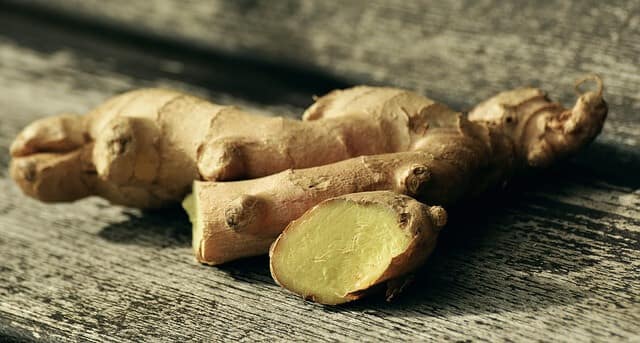
A very commonly used rhizome (rootstalk), it is a superfood as well as a super medicine. Many scientific studies indicate that this spice contains active ingredients that possess anti-inflammatory and analgesic properties. It can be used in numerous scenarios, from arthritis to gastric discomfort. The active medicinal ingredients in ginger are phytochemicals known as gingerols and shogaol. A study found that ginger was just as effective as a common triptan medication used to treat many types of migraine headaches.
Research also suggests that regularly eating ginger can help relieve certain pain that comes with rheumatoid arthritis and osteoarthritis. In addition to helping relieve pain, ginger may help to prevent some of the side effects associated with conventional painkillers as well. Several forms of ginger can be used to flavour foods and potentially reduce certain forms of pain. These include fresh ginger root, powdered ginger, crystallized (sugared) ginger, and ginger juice.
In the Tamil Nadu region of India, Sukku Pathu or Ginger poultice therapy is used for arthritic pain relief. It is a simple home remedy that can be easily used at home. Check the video below for instruction on how to prepare it.
Possible Side Effects: The side effects of ginger are a result of large doses and prolonged use. Small amounts that are diluted or infused pose no threat to daily consumption. However, excess or large doses can result in abdominal discomfort and irritation in the oesophagus.
3. Turmeric

Turmeric is a commonly used spice in Southeast Asian cuisine. Curcumin, an active compound in turmeric, is known for its antioxidant and anti-inflammatory activity. Like ginger, studies have found that turmeric may have pain-reducing power equal in some cases to that of prescription and over-the-counter medications. It can help improve rheumatoid arthritis, post-operative inflammation, Crohn’s disease, ulcerative colitis, irritable bowel syndrome, and stomach ulcers.
Even though both turmeric and ginger reduce the incidence and severity of flare-ups, turmeric has significantly more anti-inflammatory and antioxidant power than ginger. A lab study compared the pain-relieving properties of turmeric to ibuprofen and a prescription NSAID (a nonsteroidal anti-inflammatory drug) and found them to be equally effective. All in all, turmeric is a very effective analgesic. It can cure a variety of conditions, from migraine headaches to post-surgical pain.
Possible Side Effects: Likened with ginger as a potent anti-inflammatory medicine, Turmeric in large doses can cause abdominal discomfort, diarrhoea and nausea.
4. Eucalyptus
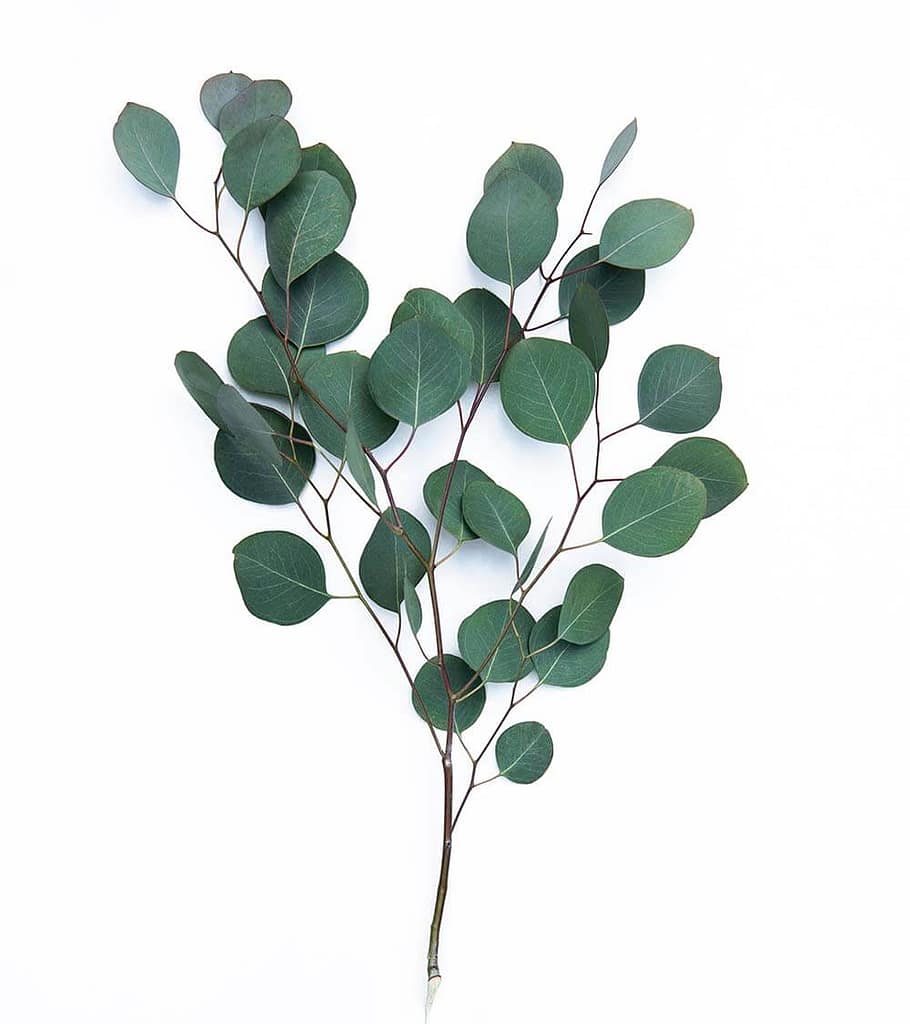
Eucalyptus (Eucalyptus globulus) is an evergreen tree native to Australia but cultivated worldwide. In the late 1800s, its ability to promote sweating and clear mucus led to eucalyptus oil being prescribed for respiratory conditions including bronchitis, flu, asthma, and coughs. As word about eucalyptus oil spread, it began to be used in other ways, including as a liniment for tired, sore muscles, and to ease the pain of arthritis. Like many essential oils, eucalyptus oil is being investigated for its use as a pain reliever and is also considered as one of the best herbs for pain relief.
In a 2013 study, inhalation of eucalyptus oil for 30 minutes on three consecutive days following knee replacement surgery was effective in decreasing patients’ pain and blood pressure. A eucalyptus-based ointment was found to increase circulation when applied to the forearms of participants in a small double-blind study published in 1991, which suggests that eucalyptus may temporarily ease minor muscle soreness when applied topically.
Possible Side Effects: Ingestion of over 3ml of undiluted eucalyptus oil can lead to stomach pain, burning sensations, nausea and dizziness.
5. Liquorice
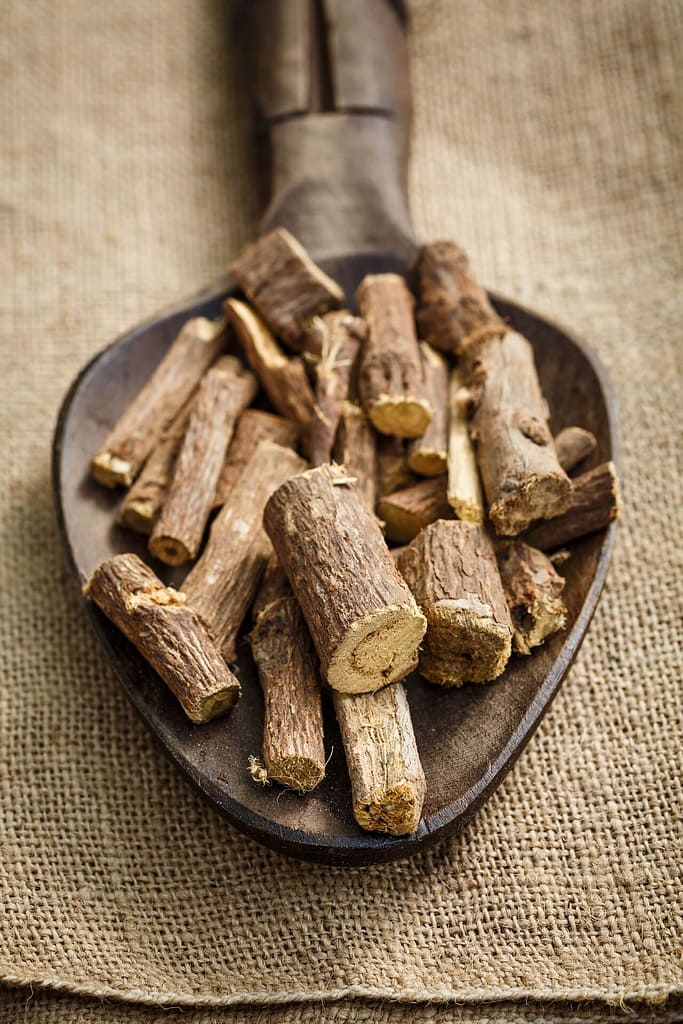
The root of the liquorice plant has a long history of use in Eastern and Western medicine. The liquorice plant is a perennial legume native to the Middle East and parts of Asia and India. In terms of pain relief, it mainly pertains to menstrual cramps. It is commonly known as Mulethi in India. Liquorice root is a mainstay home remedy for women with menstrual cramps and is also believed to help alleviate many of the adverse symptoms of menopause, including hot flashes.
Liquorice contains phytoestrogens, plant-based compounds that mimic the effects of estrogen in the body. A study involving 120 women with hot flashes reported that a daily, 330-milligram dose of liquorice root provided only modest relief in the frequency and severity of hot flashes compared to the placebo group. This further aids in relieving the menstrual cramps and chronic pain for the duration of the medication.
Possible Side Effects: The side effects of excessive liquorice consumption span over reduced libido, high blood pressure, fluid and sodium retention and ED.
6. Shallaki (Boswellia Serrata)
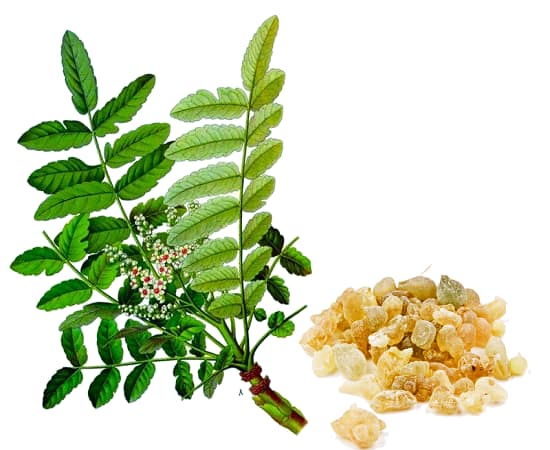
Boswellia serrata is a wonder compound for the treatment of arthritis. It has been used for thousands of years in Ayurveda and is well known for its anti-inflammatory property. It has been found to be the most effective in treating osteoarthritis. The potency of the Boswellia resin lies in its capacity to inhibit the 5-lipoxygenase enzyme responsible for the production of leukotriene. Of the four acids that are present in the resin, the Acetyl-11-keto-β-boswellic acid (AKBA) is considered the most potent. The potency of the products that contain Boswellia serrata extracts is based on the concentration of the acids.
Possible Side Effects: Excessive Boswellia serrata consumption can lead to certain digestive disorders such as acid reflux, nausea and diarrhoea.
7. Clove
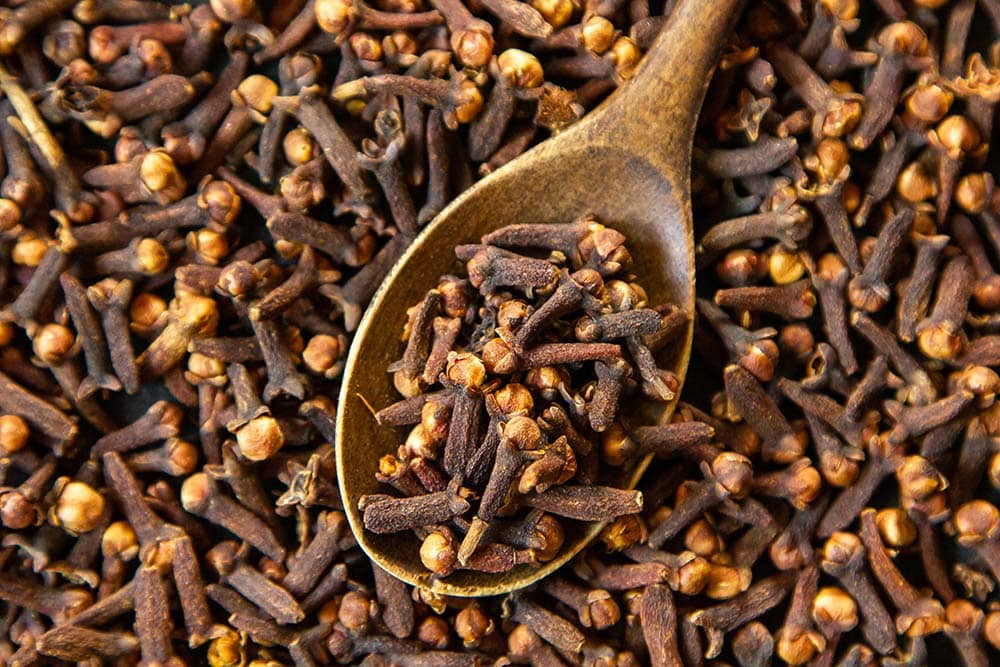
Present since centuries, clove oil has been used in traditional Indian and Chinese medicine as an effective medicine for pain relief. Clove oil contains a chemical called eugenol, which behaves as an anaesthetic and antibacterial agent. Clove oil is also anti-inflammatory and antifungal. It has a strong, warm, and spicy taste and is easily available at all major stores. To use it for a toothache, one can dip a clean tissue, cotton swab, or cotton ball into the oil and wipe it over the gums at the point of the pain. People can also use whole cloves by simply placing them on the affected area for several minutes at a time. Some research papers also suggest that clove gel may reduce the pain of needle insertion in dentistry. Although, it is extremely advised to not use clove in excess as it can have significant side effects and potentially damage teeth or gums.
Possible Side Effects: Excessive usage of clove can lead to sore gums and irritation on the inside of the mouth.
8. Nirgundi
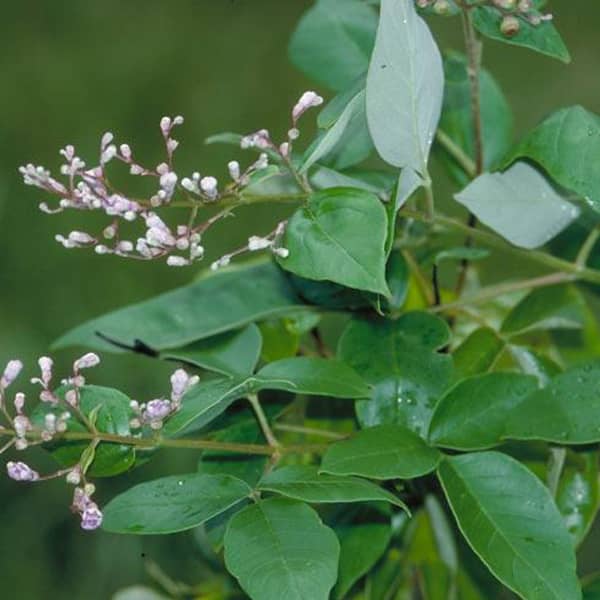
Nirgundi is a docile herb, popularly used for all kinds of joint pains. Consuming Nirgundi can also reduce swelling. Owing to the fact that it is a great numbing agent, it also helps reduce excessive pain. Its potent anti-inflammatory, anti-convulsing and antioxidant properties help the joints recover their healthy state in no time. A unique trait, it has hot potency, making it an excellent choice for ailing joints. Nirgundi can be used in oil, paste or decoction form to treat multiple areas and severity of the condition.
Possible Side Effects: Capable of regulation and affecting hormonal secretions, Nirgundi is not recommended for pregnant women and those that use oral contraceptives. It can also cause dry mouth, nausea and headaches.
9. Ajwain
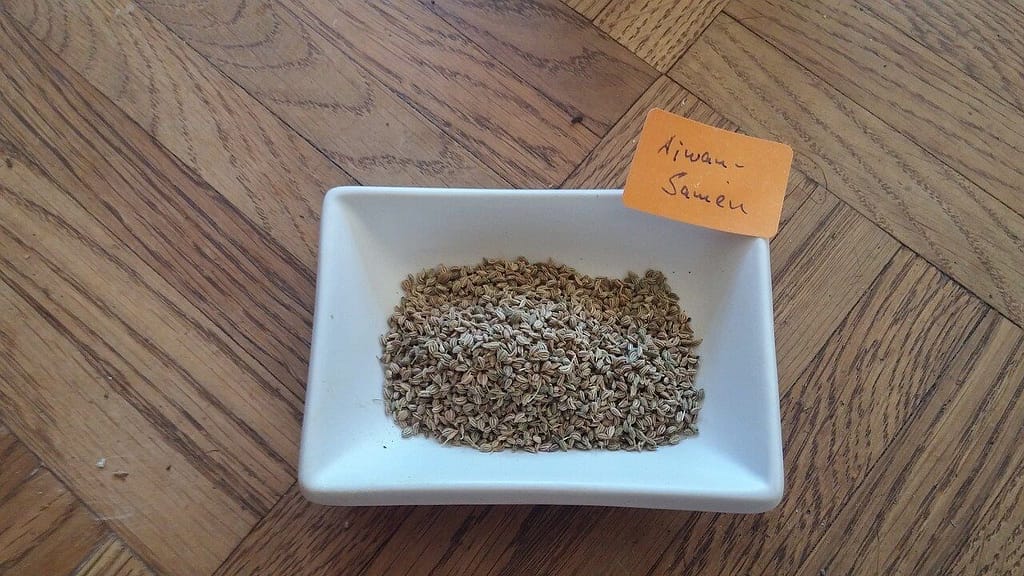
Due to the presence of anti-inflammatory components, Carom seeds (Ajwain) make for great food to heal arthritis pain. In winters, it comes in very handy due to its anaesthetic properties that help in relieving excessive pain during the nippy weather. Adding a spoonful of carom seeds or ajwain in a tub of hot water and soaking your aching joints in the water for 5-10 minutes will vastly help ease swelling and pain. Another way is to crush these seeds and make a paste and apply it on the affected areas in order to alleviate the pain. Alternatively, one can drink ajwain water every day.
Possible Side Effects: Excessive consumption of Ajwain can lead to stomach ulcers, nausea, dizziness and heartburns. It also increases the body temperature.
10. Manjishta
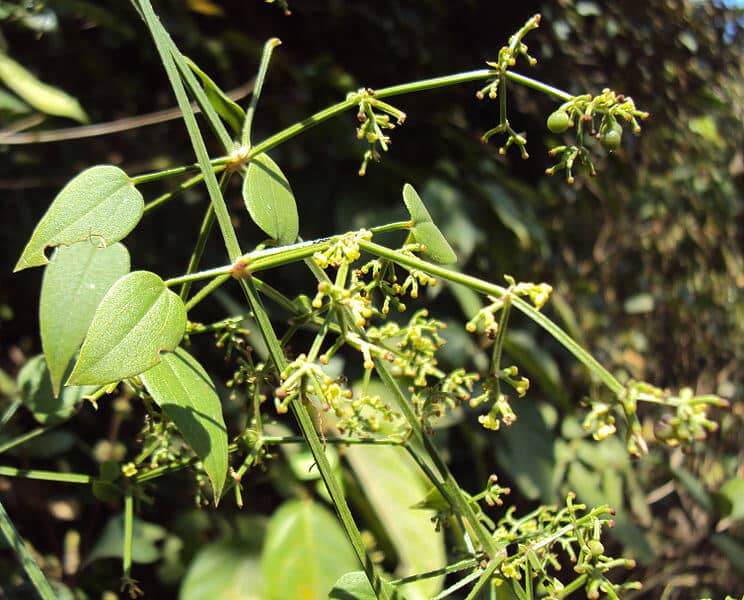
Astringent in nature, the Manjishta herb has immense medicinal value. Manjishta is a very potent herb when used to treat one of pain. Women that experience painful menstrual cycles are encouraged to ingest Manjishta powder on a regular basis to regulate their menstrual flow while also reducing painful menstrual cramps and contractions. It can be consumed in a quantity of a half a teaspoon twice daily after meals along with lukewarm water.
Possible Side Effects: Manjishta should be consumed in controlled dosages as it has certain carcinogens present in it and can also change the colour of sweat, perspiration, tears and breast milk. It is not recommended for use during pregnancy.
11. Jyotishmati
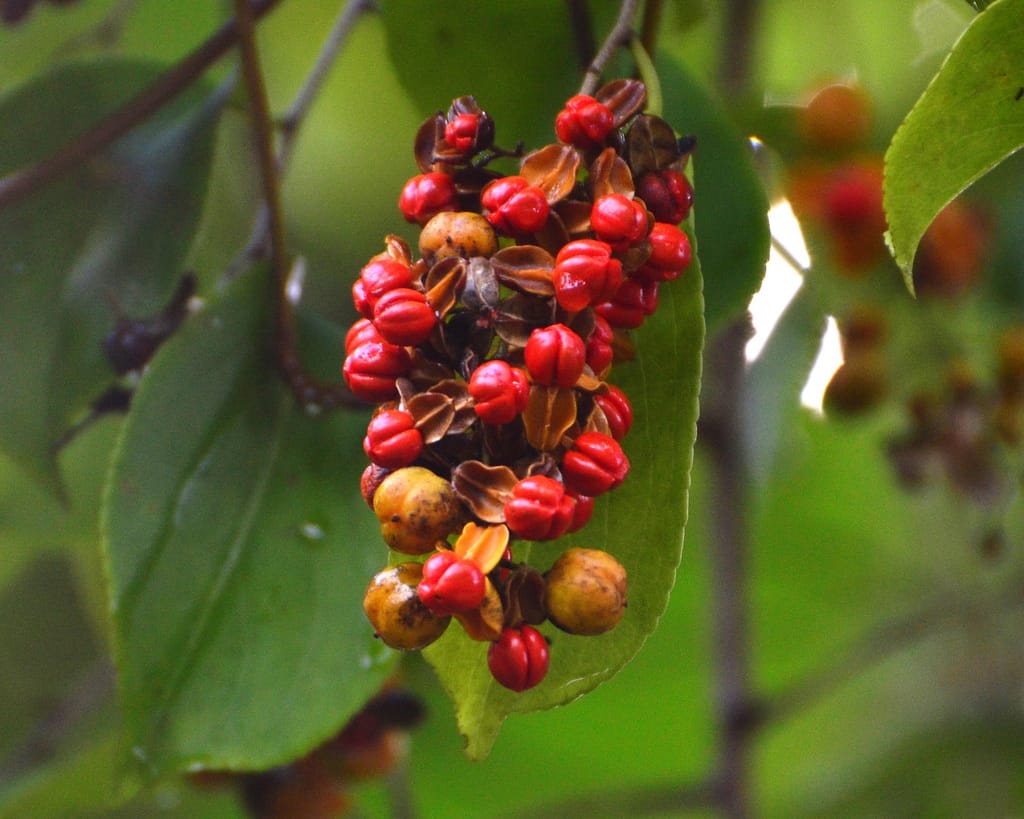
Botanically known as the Celastrus Paniculatus, the Jyotishmati is known to improve one’s memory and is an ayurvedic medicine for the following pain and musculoskeletal disorders such as muscle cramps, sciatica, osteoarthritis and paralysis.
The medicine is derived from the consumption of the seed powder which has hot potency. The seed oils have phytochemicals such as Celapagin, Celapanigin, Celapanin, Paniculatine and Celastrine. It is primarily found to be effective on the Vata doshas but also exhibits potency when treating Kapha doshas as well.
Possible Side Effects: As a plant with the property of the hot potency, the Jyotishmati is usually recommended for treatment during the winters or in a combination with cooling compounds. It is also administered in small doses to prevent any side effects.
Did you find this post useful? Would you like to get back to it later? Save THIS PIN below to your Pinterest Natural Living or Ayurveda board!
